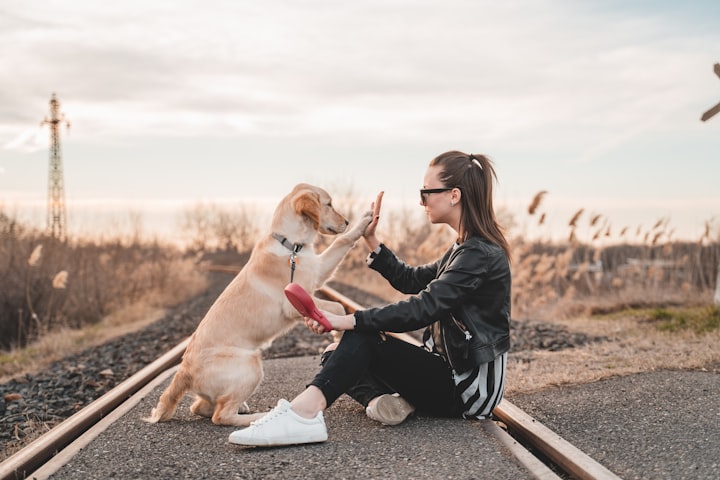How to Train a Puppy: A Comprehensive Guide
Mastering Puppy Training: The Essential Commands, Timing, and 'No' Etiquette

Training a puppy can be a rewarding but challenging experience. Puppies are like blank slates, ready to learn and grow into well-behaved companions. In this guide, we will answer common questions about training your puppy and provide insights into the essential commands and techniques to make your training journey successful.
1. What are the 7 Commands to Teach a Puppy?
Proper training involves teaching your puppy basic commands that establish communication and discipline. Here are seven fundamental commands you should focus on:
a. Sit:
Teaching your puppy to sit is one of the first and most crucial commands. It helps control your puppy's behavior in various situations and lays the foundation for more advanced commands.
b. Stay:
"Stay" commands your puppy to remain in one place until you release them. This command is vital for safety and preventing your puppy from running into dangerous situations.
c. Come:
The "come" command ensures your puppy returns to you when called. This is essential for recall and maintaining control in off-leash situations.
d. Down:
"Down" instructs your puppy to lie down on the ground. This command is useful for calming excited puppies and controlling their energy.
e. Leave It:
Teaching your puppy to "leave it" prevents them from picking up or interacting with potentially harmful objects or substances.
f. Heel:
"Heel" commands your puppy to walk calmly by your side. This is essential for leash training and polite walks.
g. Off:
The "off" command helps your puppy understand when to remove their paws or body from objects or people, promoting good manners.
CLICK HERE TO GET E-BOOK FOR TRAIN PUPPY
2. What Should I Train My Puppy First?
When deciding what to train your puppy first, focus on the most basic and essential commands: "sit," "stay," and "come." These commands provide the foundation for more advanced training. Start with one command at a time, ensuring your puppy masters each before moving on to the next.
Consistency is key. Use treats and positive reinforcement to reward desired behavior and be patient with your puppy's progress. Short, frequent training sessions are often more effective than long, exhausting ones.
3. What is a Good Age to Train a Puppy?
Puppies are like sponges when it comes to learning, but the optimal age to start training depends on the individual puppy. In general, you can start basic obedience training as early as eight weeks old. However, keep these considerations in mind:
Socialization: Puppies should be socialized from a young age, exposing them to various people, animals, and environments.
Attention Span: Young puppies have short attention spans, so keep training sessions brief and engaging.
Physical Abilities: Certain commands, like "heel" or "stay," may require more physical development. Adjust your training accordingly.
Remember, every puppy is unique, and their development rate can vary. Be patient and adjust your training approach to suit your puppy's needs.
CLICK HERE TO GET E-BOOK FOR TRAIN PUPPY
4. How Do You Teach a Puppy "No"?
Teaching a puppy "no" is an essential aspect of their training. Here's a step-by-step guide:
Step 1: Use a Firm Tone:
When your puppy engages in unwanted behavior, use a firm, but not aggressive, tone of voice to say "no." Your tone should convey disapproval without frightening the puppy.
Step 2: Redirect Their Attention:
Immediately redirect your puppy's attention to an appropriate activity or toy. This helps them understand what behavior is acceptable.
Step 3: Consistency:
Consistency is crucial. Always use the same command ("no") and apply it consistently across all family members.
Step 4: Positive Reinforcement:
Reward your puppy when they obey the "no" command and redirect their behavior. Use treats or praise to reinforce the positive response.
Step 5: Time-Out:
In extreme cases, if the unwanted behavior continues, consider a time-out in a safe, quiet area. This helps the puppy associate their actions with consequences.
Remember, patience and consistency are key when teaching your puppy "no." Avoid physical punishment, as it can be counterproductive and harm your puppy's trust in you.
Promoting Further Learning
For in-depth guidance on training your puppy, we recommend the eBook "How to Train Your Puppy" available here. This eBook offers valuable insights, tips, and techniques to help you train your puppy effectively and foster a loving and obedient companion.
In conclusion, training a puppy requires dedication, patience, and a clear understanding of the essential commands and techniques. Start with the basics, be consistent, and use positive reinforcement to guide your puppy toward becoming a well-behaved member of your family. With the right approach and plenty of love, your puppy will thrive in their training journey.





Comments
There are no comments for this story
Be the first to respond and start the conversation.